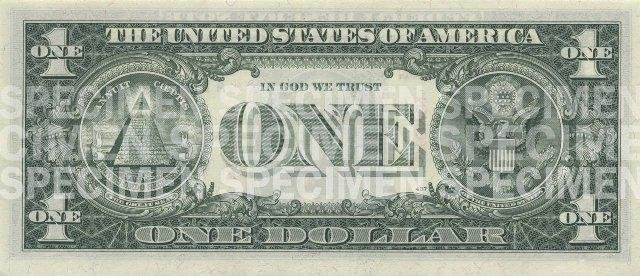The U.S. dollar is one of the most powerful and widely used currencies in the world. However, its journey from being backed by physical gold to becoming a fully digital asset has been a complex and transformative process. Understanding this history provides insight into how global finance has evolved and what the future might hold for the U.S. dollar.
The Birth of the U.S. Dollar: Early Beginnings
Before the United States had an official currency, various forms of money were used, including foreign coins, commodity money, and paper notes issued by individual banks. To create a more unified system, the U.S. government passed the Coinage Act of 1792, which established the dollar as the official currency of the nation.
At that time, the dollar was based on a bimetallic standard, meaning its value was tied to both gold and silver. The idea was to provide stability and ensure trust in the monetary system by backing currency with tangible assets. The U.S. Mint began producing coins with specified amounts of gold and silver to maintain this system.
However, the use of both gold and silver created problems. Fluctuations in the global supply and demand for these metals caused shifts in their value, leading to economic instability. This issue persisted until the country moved toward the gold standard.
The Gold Standard: A New Era of Stability
By the late 19th century, the U.S. made a decisive shift to the gold standard, officially adopting it in 1900 with the passage of the Gold Standard Act. Under this system, every dollar in circulation was directly linked to a fixed amount of gold, which could be redeemed upon request.
The gold standard had several advantages. It limited inflation since the government could only print as much money as it had gold reserves. It also promoted international trade by providing a stable exchange rate, as many countries followed the same system.
However, this rigid system also had drawbacks. Since the supply of money was restricted by gold reserves, it limited the government’s ability to respond to economic crises. If there was not enough gold available, economic growth could slow down.
The Great Depression and the Fall of the Gold Standard
The weaknesses of the gold standard became especially evident during the Great Depression of the 1930s. As banks collapsed and the economy crumbled, people rushed to exchange their paper money for gold, leading to a severe depletion of gold reserves. This panic forced the government to take action.
In 1933, President Franklin D. Roosevelt suspended the domestic gold standard, prohibiting citizens from holding gold and requiring them to exchange it for paper currency. This move allowed the government to increase the money supply, helping to stimulate the economy during the crisis.
By 1944, the international monetary system shifted under the Bretton Woods Agreement, which pegged major global currencies, including the U.S. dollar, to gold. However, the U.S. remained in control, as other countries’ currencies were linked to the dollar rather than gold directly.
The End of the Gold Standard: The Nixon Shock
By the late 1960s, the U.S. was facing financial difficulties due to rising government spending, particularly from the Vietnam War and social welfare programs. Foreign countries holding U.S. dollars began demanding gold in exchange, causing a rapid decline in U.S. gold reserves.
In 1971, President Richard Nixon made a historic decision—he ended the convertibility of the U.S. dollar to gold. This move, known as the Nixon Shock, effectively ended the gold standard and shifted the U.S. to a fiat currency system, meaning the dollar’s value was no longer backed by a physical commodity.
Under a fiat system, the U.S. dollar’s value is determined by market forces, government policies, and trust in the economy. This shift gave the Federal Reserve more flexibility to manage the money supply and respond to economic changes, but it also introduced new challenges, such as inflation.
The Digital Revolution: The Rise of Electronic Money
The late 20th and early 21st centuries saw a massive transformation in how money was used. The rise of computers and the internet revolutionized banking, leading to the development of electronic payments, credit cards, and online transactions.
Key milestones in this digital revolution include:
- The introduction of credit cards in the 1950s, allowing people to make purchases without physical cash.
- The development of ATMs and electronic banking in the 1970s and 1980s, making banking more convenient.
- The rise of e-commerce and digital payments, with services like PayPal emerging in the late 1990s.
- The introduction of cryptocurrencies like Bitcoin in 2008, which challenged traditional financial systems by offering decentralized and borderless transactions.
These innovations have made financial transactions faster and more accessible, but they have also raised concerns about security, privacy, and the role of government in regulating digital money.
The Future: A Digital U.S. Dollar?
As digital currencies become more popular, governments around the world are exploring the concept of Central Bank Digital Currencies (CBDCs). A digital U.S. dollar would function similarly to paper money but exist only in electronic form, allowing for faster transactions and better tracking of economic activity.
The U.S. Federal Reserve has been studying the feasibility of launching a digital dollar. Potential benefits include:
- Faster and cheaper transactions
- Greater financial inclusion for those without bank accounts
- Reduced reliance on cash
However, there are concerns as well:
- Privacy issues, as digital currencies could allow governments to monitor transactions more closely.
- Cybersecurity risks, as digital assets are vulnerable to hacking.
- Potential disruption to the banking system, as people might move their money out of traditional banks.
Conclusion: The Ever-Changing U.S. Dollar
The history of the U.S. dollar reflects the broader evolution of money itself. From the gold-backed system of the 19th and early 20th centuries to the fiat-based system we use today, the dollar has adapted to economic, political, and technological changes.
Now, as the world enters the digital age, the dollar is once again on the verge of transformation. Whether it remains a paper currency, becomes fully digital, or coexists with cryptocurrencies, its role as a global financial leader is unlikely to disappear anytime soon.
As technology and financial systems continue to evolve, the story of the U.S. dollar will remain one of adaptation and resilience in an ever-changing world.\
More Updates : USA Glory.




